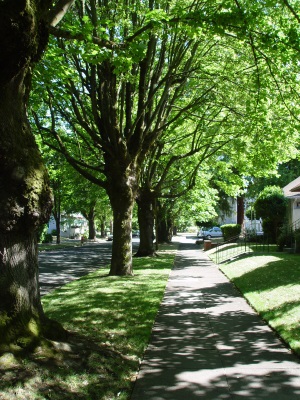Long Island Spring Tree Care Tips
Spring has arrived on Long Island! It’s time to conduct the following basic spring tree care tasks for the long-term health of your trees. So as to give your trees a long, productive growing season, it’s best to complete these tasks early in April. Let’s take a look at the most effective spring tree care projects Long Island homeowners and businesses can tackle to keep trees healthy this year.
Spring Cleaning Begins at Base of the Tree
Remove twigs, leaves, and other detritus that may have accumulated beneath and around trees. Warmer weather signals the time to remove any protective plastic or coverings you may have had in place during the cold winter months. It’s a good idea to rake up any debris that collected underneath or around the tree, like old leaves or fallen fruit because this helps to protect the tree from any diseases or fungi that might be lingering.
Inspect Trees for Damage & Disease
Look for obvious signs of tree disease, including broken branches, holes, molds, and fungi. Also notice which branches do not put out blossoms or leaves—these are likely dead and ready to be pruned away, ideally by a professional Long Island tree pruning service. Winter desiccation, also known as “winter burn,” can occur when plants dry out in cold winter conditions. Winter sunscald is another challenge; it manifests as vertical cracks in tree bark. Discoloration is another clue that something may be amiss. For instance, some plants will yellow if they receive too much water.
If you have questions about damage, call an experienced arborist for sound information. Our Long Island ISA-certified arborists can recommend when to remove branches, when to add supportive cables, and when it’s best to remove the whole tree, rather than risk it crashing down in the next storm.
Plant New Trees in Spring
Trees bring dozens of benefits to your home or business! They reduce noise levels, stabilize soil, and give wildlife a place to perch. Trees also increase property values while decreasing energy costs. Spring is a good time to add trees to your property, as their roots will have enough time to dig in before scorching summer temperatures hit. Of course, every tree species has its own preferences, so feel free to contact us with questions about the best time to plant a new tree.
Mulch trees and water
Next, apply some mulch. Mulching trees helps to suppress weeds and retain moisture. It’s most important when you’re dealing with young trees (less than 10 years old), but older trees can benefit as well. The layer of mulch should be two to three inches thick and a couple of feet wide. Don’t let it touch the trunk directly, though, because this gives diseases an easy point of access. Leave an inch or two clear.
Don’t water the tree until the soil thaws, or else you’ll just create runoff. Don’t let the tree dry out even when the weather is cool, though. You might have to water a few times a day. Deeply water any trees near areas where deicing materials were used. Watering it well helps to wash away the salt and minerals. Finally, adjust your sprinklers so they don’t create puddles or spray the leaves—wet foliage encourages disease.
Fertilize Trees
Fertilization can also be done in the spring months. Fertilizer is a good idea whenever soil lacks the macronutrients and micronutrients that trees need to thrive. To figure out if an established tree needs fertilization, observe its shoot growth, i.e., the growth that happens in a single year. In general, shoot growth of less than 2 inches indicates a fertilizer may be required. Of course, certified arborists take many other factors into account when prescribing the best fertilization approach.
Beyond soil testing, foliage color and the history of the yard should also be considered. As far as timing goes, it’s ideal to provide slow-release fertilizer prior to the tree’s springtime growth spurt. While fertilization timing varies by location, by soil conditions, and by species, a good rule of thumb is to apply fertilizer as soon as the ground is workable in the spring.
Importance of Fertilizing Long Island Trees in Spring
Spring tree fertilization is common as most trees have their greatest need for nutrients in the spring. In Long Island this spring application usually happens in March or April as, rainy, cold weather wanes and sunny weather begins to show its face. Trees in suburban areas need fertilization because many of the natural processes that take place to add nutrients to the soil are disrupted. Leaves and other debris are cleaned up before they can be re-incorporated into the soil. Soil is often compacted so many nutrients are washed away as suburban runoff. Also, the presence of pollutants can strip nutrients from the soil or disrupt their absorption.
If your tree is having health issues, fertilization is likely an important part of getting that tree back into tip top shape, but you need to be sure that the problem that caused the tree to be unhealthy has been resolved. A Certified Arborist can help you identify and diagnose health issues. Trees are similar to humans in that good nutrition can go a long way to keep us healthy, but in some cases additional medicine or other interventions are required to achieve and maintain our health.
Spring Tree Care Long Island, New York
From Long Island tree removal to pruning to fertilization, you can count on Joe’s Complete Tree Service for springtime tree care. Our customers love how we go the extra mile when providing tree service. Long Islanders are so pleased with our work that they’ve given us all 5-Star Ratings on Google Reviews, putting us at the top of our field. Call us today to arrange a springtime tree assessment for your home.


